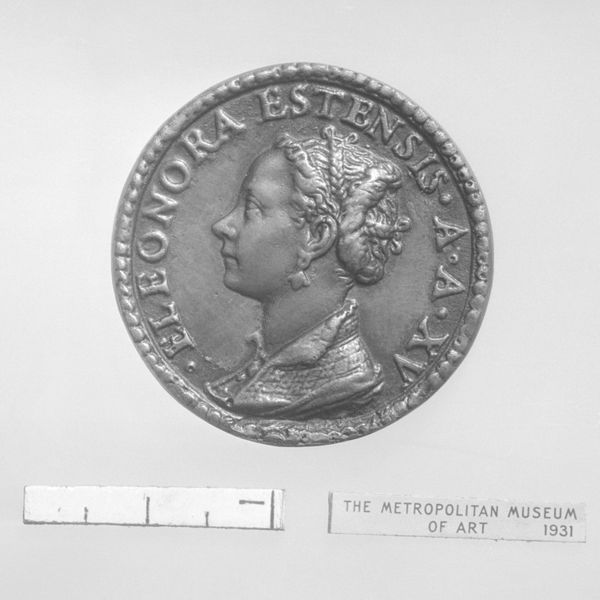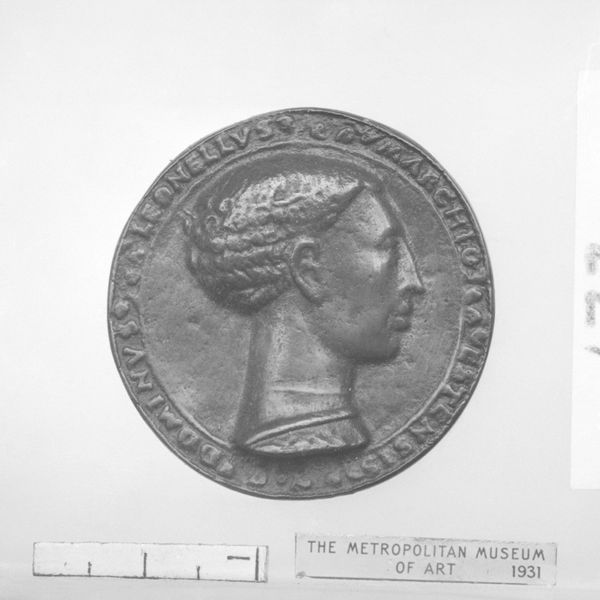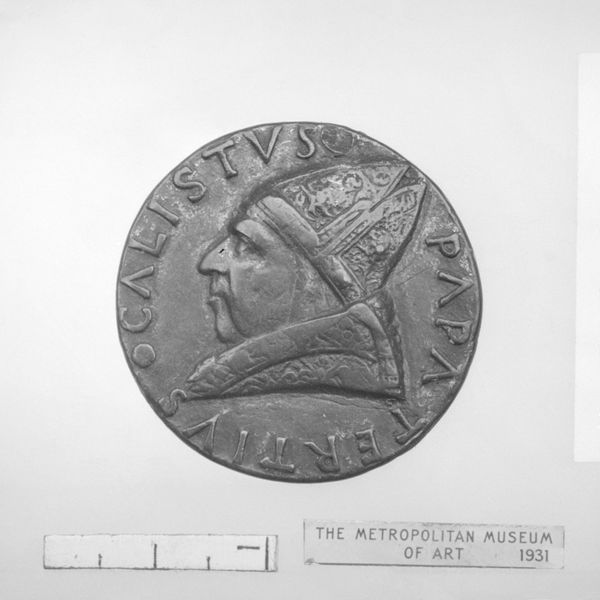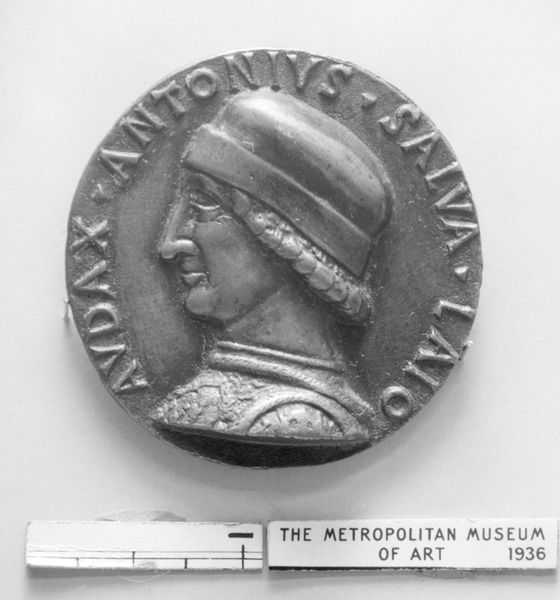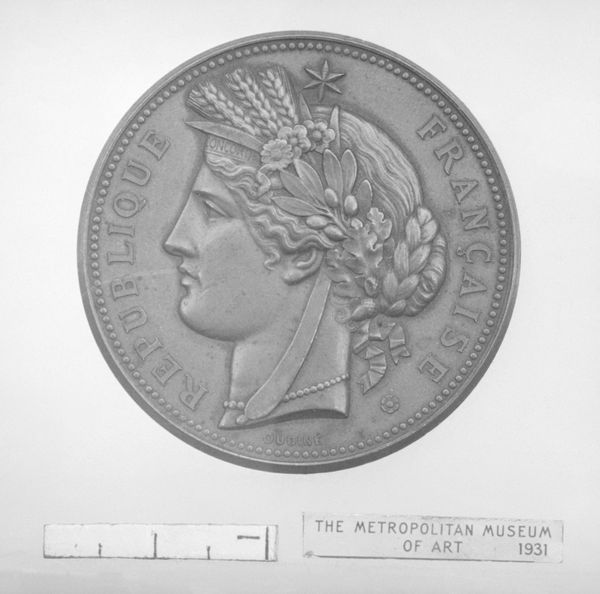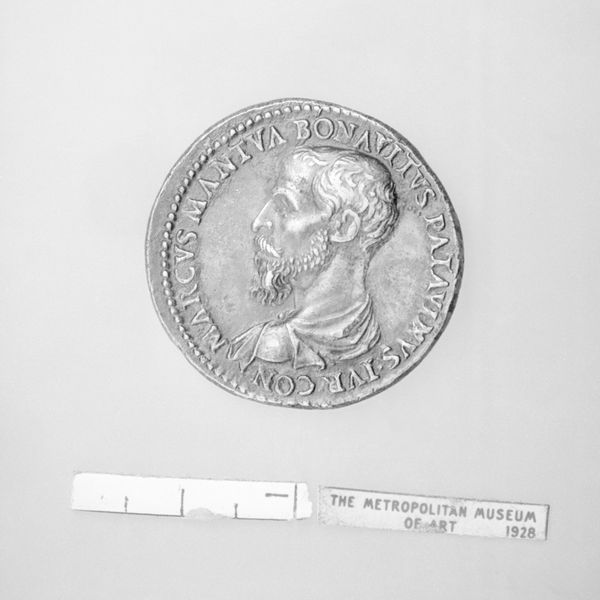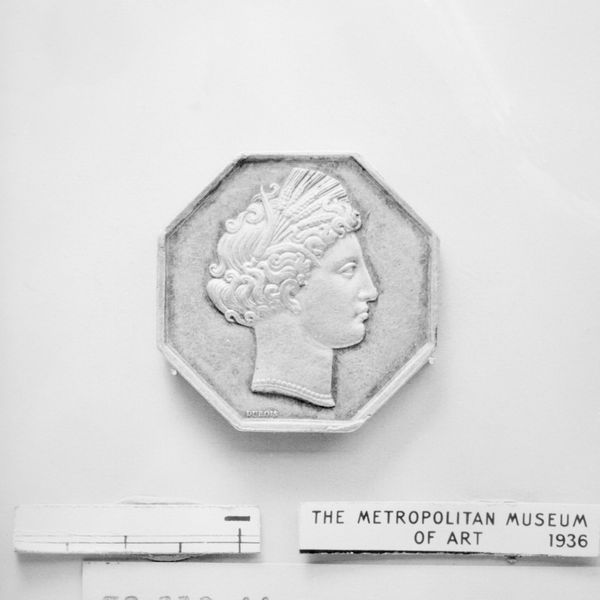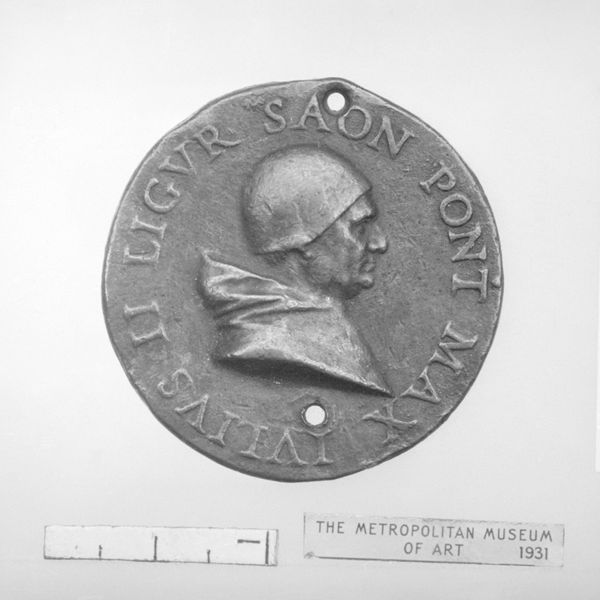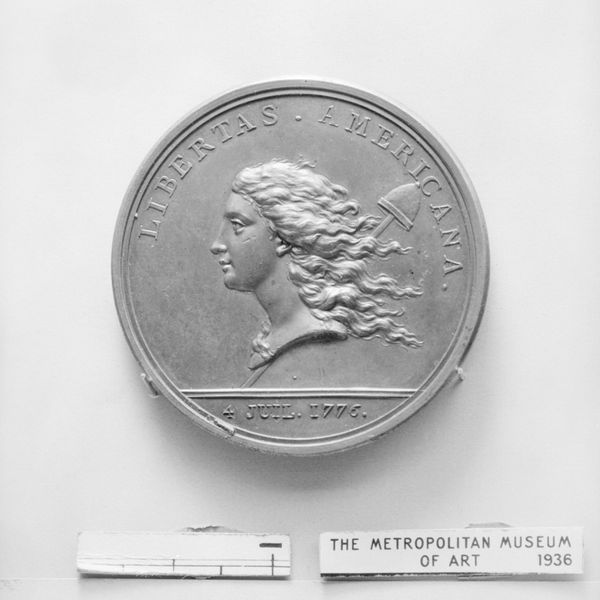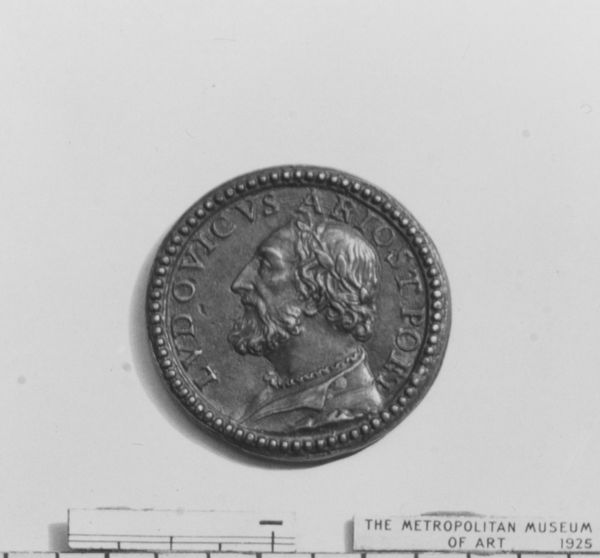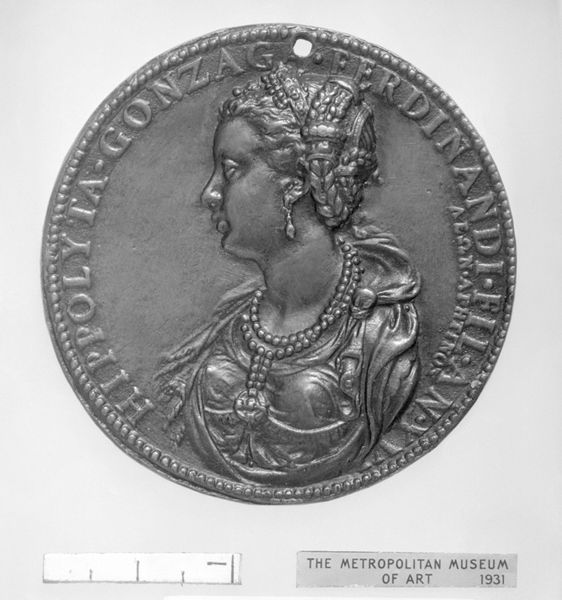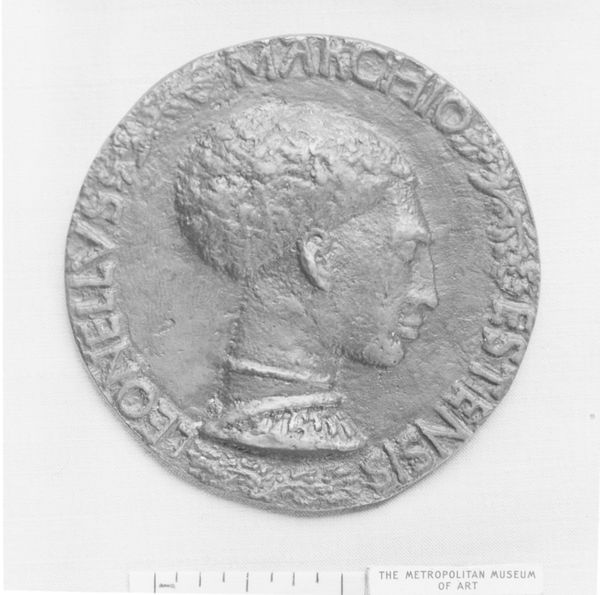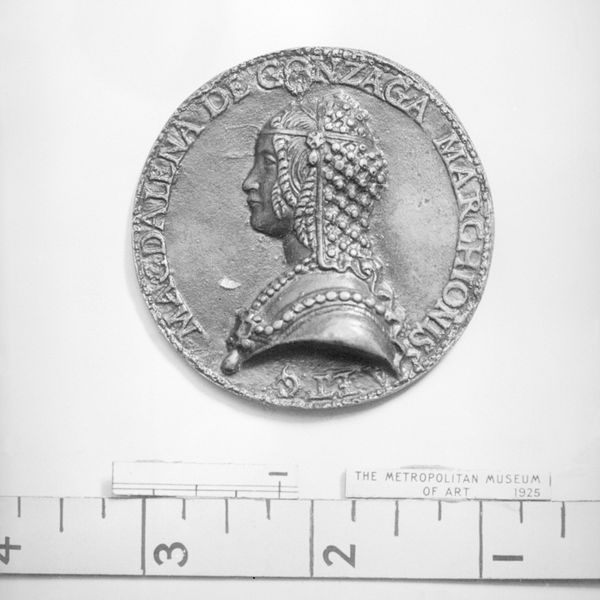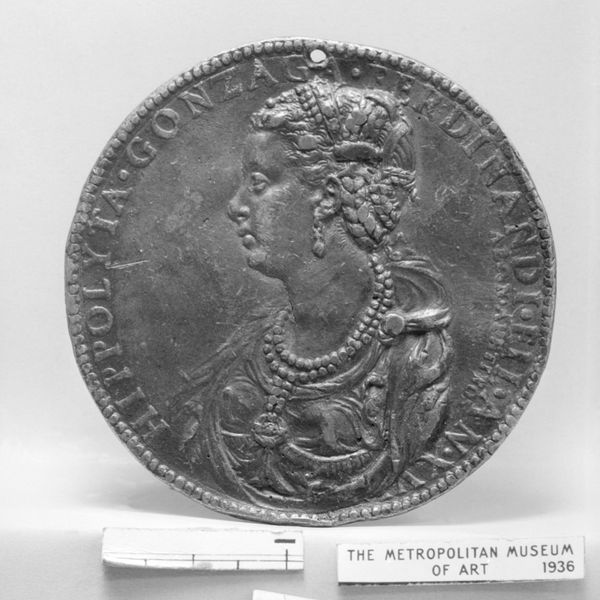
bronze, sculpture
#
portrait
#
medal
#
sculpture
#
bronze
#
11_renaissance
#
sculpture
#
decorative-art
#
italian-renaissance
Dimensions: Diameter: 48 mm
Copyright: Public Domain
Curator: Welcome. We're looking at "Alfonso V, King of Aragon," a bronze sculpture made by Paolo da Ragusa between 1430 and 1465. It’s currently held at the Metropolitan Museum of Art. Editor: It looks weighty! It makes me think of power, being immortalized like this in bronze…sort of imposing, even on a small scale. Did they carry these around, like medieval trading cards for royals? Curator: The medal presents a Renaissance portrait, characterized by its realistic representation and use of bronze. Notice the incised lettering bordering the edge of the medallion and its subtle play of light across the low relief portrait of Alfonso V. The piece uses classical forms to immortalize the ruler, projecting power and authority. Editor: There’s something a bit severe in the profile though, don’t you think? His haircut, so severe, clashes with the luxurious idea of royalty. Makes me wonder what kind of guy he really was. I mean, were all these stony-faced kings and queens actually as uptight as their portraits suggest? Curator: This is emblematic of the Italian Renaissance’s focus on reviving classical aesthetics and ideals. The bronze medium itself links back to ancient Roman practices, and the profile portrait was a favored style for depicting rulers and important figures. The piece embodies Renaissance humanism’s valorization of individual achievement. Editor: So, it's all about looking back and presenting the king as a timeless icon, eh? Even the slight imperfections in the metal, the wear and tear, it sort of hints at a story beyond the polished image. That makes it more human, for me at least. Curator: Exactly. Through the interplay of form, medium, and historical context, the artwork represents a powerful statement of Renaissance ideals regarding power and representation. Editor: Makes you think about the weight of legacy, literally and figuratively. Each little mark on this metal circle holds history, doesn't it? Curator: Precisely. And with that, perhaps you can contemplate on the themes we’ve just addressed. Editor: Thanks! Food for thought—or rather, for the eyes and the imagination.
Comments
No comments
Be the first to comment and join the conversation on the ultimate creative platform.
